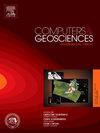Rock-type classification: A (critical) machine-learning perspective
IF 4.2
2区 地球科学
Q1 COMPUTER SCIENCE, INTERDISCIPLINARY APPLICATIONS
引用次数: 0
Abstract
We investigate machine-learning techniques for rock-type classification. A throughout literature review (considering the machine-learning technique, number of classes, rock types, and image types) presents a diversity of datasets employed and a wide range of classification results as well as multiple problem formulations. Throughout the discussion of the literature, we highlight some common machine-learning pitfalls and criticize the decisions taken by some authors on the problem formulation. We present an experimental contribution by evaluating the classification of seven types of rocks found in carbonate reservoirs along with state-of-the-art Convolutional Neural Networks (CNNs) architectures available through a well-known open-source library. For this experimentation, we detail the preparation of the dataset of drill core plugs (DCPs), the experimental setup itself, and the obtained results considering the normalized accuracy and the traditional accuracy as metrics. We performed the manual background segmentation of the employed dataset of DCPs; so the results reported are not influenced by the background of the images. We evaluate top-1, top-2, and top-3 performance for the problem. We apply fusion of multiple CNNs for richer classification decisions. We also contribute by presenting the manual classification — human labeling by looking at the image on the computer screen — of the same seven-class dataset, performed by six non-geologist volunteers. Finally, we present a conclusion for the results obtained with our experiments and share valuable advice for researchers applying machine learning to rock classification.
岩石类型分类:机器学习的(关键)视角
我们研究了岩石类型分类的机器学习技术。通过文献综述(考虑机器学习技术、类别数量、岩石类型和图像类型),我们看到了所使用的数据集的多样性、分类结果的广泛性以及多种问题表述。在对文献进行讨论的过程中,我们强调了一些常见的机器学习陷阱,并对一些作者在问题表述上所做的决定提出了批评。我们通过一个著名的开源库评估了碳酸盐岩储层中发现的七种岩石的分类,并提出了一项实验性贡献。在实验过程中,我们详细介绍了钻孔岩心塞(DCP)数据集的准备过程、实验装置本身,以及以归一化准确度和传统准确度为衡量标准得出的结果。我们对使用的 DCP 数据集进行了人工背景分割,因此报告的结果不受图像背景的影响。我们评估了问题的前 1 名、前 2 名和前 3 名的性能。我们将多个 CNN 融合在一起,以获得更丰富的分类决策。我们还介绍了由六名非地质学家志愿者对同一七类数据集进行的人工分类--通过观察计算机屏幕上的图像进行人工标注。最后,我们对实验结果进行了总结,并为将机器学习应用于岩石分类的研究人员提供了宝贵建议。
本文章由计算机程序翻译,如有差异,请以英文原文为准。
求助全文
约1分钟内获得全文
求助全文
来源期刊

Computers & Geosciences
地学-地球科学综合
CiteScore
9.30
自引率
6.80%
发文量
164
审稿时长
3.4 months
期刊介绍:
Computers & Geosciences publishes high impact, original research at the interface between Computer Sciences and Geosciences. Publications should apply modern computer science paradigms, whether computational or informatics-based, to address problems in the geosciences.
 求助内容:
求助内容: 应助结果提醒方式:
应助结果提醒方式:


